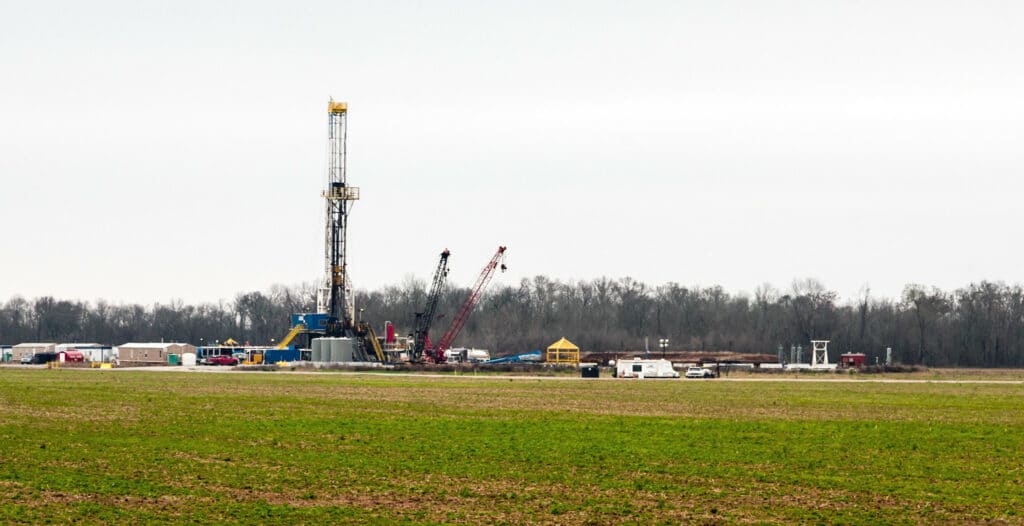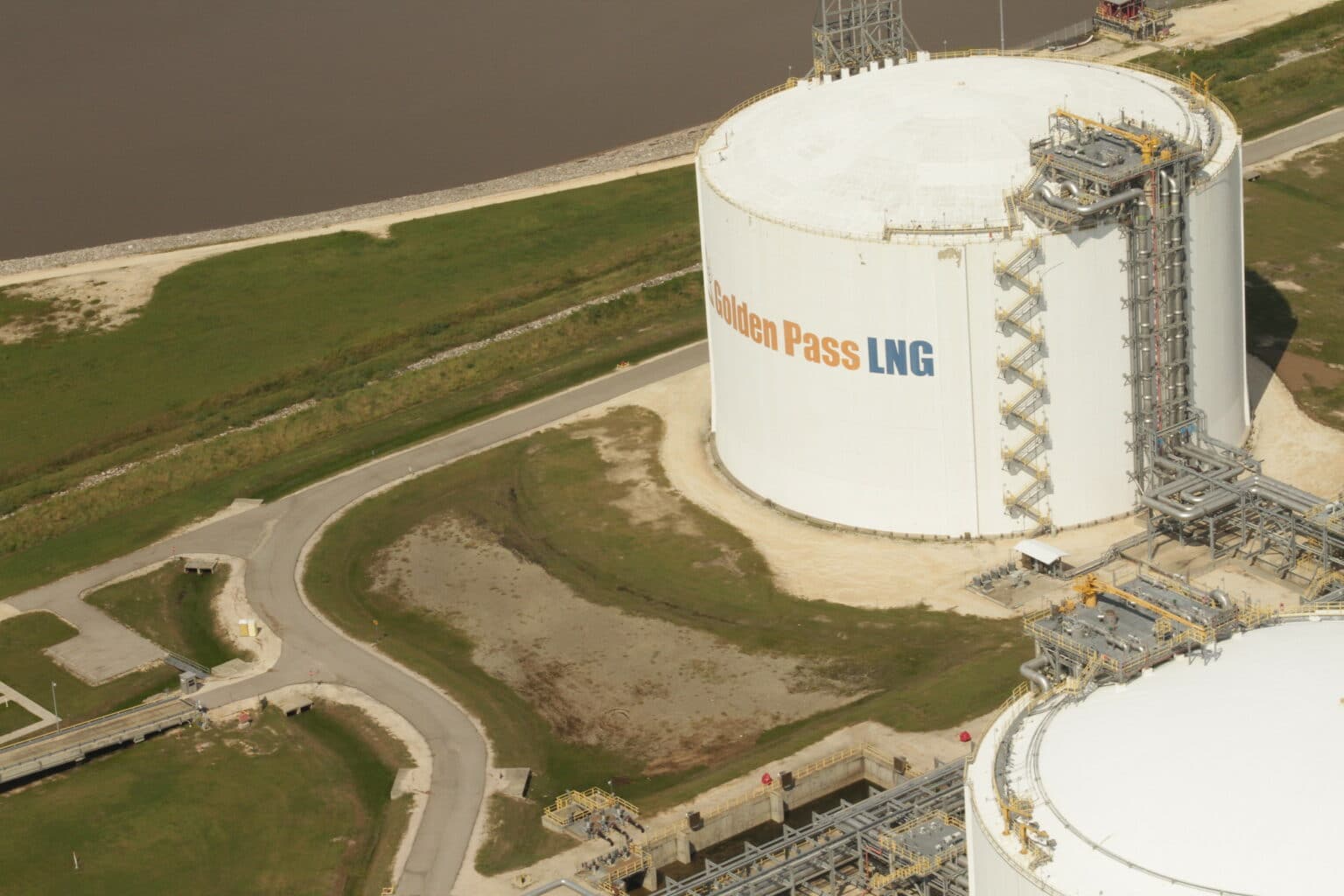In June, the Federal Energy Regulatory Commission (FERC) narrowly approved the construction of a new 42” diameter gas pipeline that will connect shale wells in Louisiana, Pennsylvania, Texas, and Ohio to a liquefied natural gas (LNG) terminal on the Gulf Coast, carrying over a billion cubic feet of fracked gas to be transported overseas every day.
The FERC decision was split, with two of the five commissioners dissenting, writing that the Commission had failed to adequately examine the climate-changing pollution linked to the fossil fuel pipeline.
That dissent in Gulf Run takes on new relevance as the term of FERC Commissioner Neil Chatterjee, appointed by Donald Trump in 2017, ended on Wednesday. President Joe Biden is expected to soon announce a nominee as Chatterjee’s replacement — a decision rumored to be between Willie Phillips, who, according to Politico Morning Energy, previously worked for Jeff Sessions and interned in George W. Bush’s Office of General Counsel, and Maria Duaime Robinson, a former official with Advanced Energy Economy, which advocates for solar, wind, hydroelectric and nuclear energy.
The Gulf Run pipeline, one small piece of the shale industry’s strategy to revive itself despite the growing climate crisis, offers a view of the crossroads faced by the Biden administration.
The project highlights federal regulators’ continued business-as-usual approach to fossil fuel infrastructure projects with decades-long expected lifespans and regulators’ failures to curb greenhouse gas emissions.
On the other hand, shifts within FERC could provide federal regulators with the opportunity to begin encouraging an energy transition, with energy experts at the International Energy Agency calling for an end to all new fossil fuel investments, citing the urgency of the climate crisis — a plan made all the more feasible by the rise of low-cost renewable energy options.
Running to the Gulf
Once built, the 134-mile Gulf Run pipeline will carry 1.1 billion cubic feet (bcf) of gas each day to the Golden Pass LNG terminal, a project by ExxonMobil and Qatar Petroleum aiming to export up to 2.5 bcf per day by 2026. That’s enough gas each day to supply roughly 12.5 million U.S. homes. But the Gulf Run pipeline is able to transport even more than that, with a total capacity of up to 1.7 bcf per day. The pipeline’s backers plan to have it up and running by 2022 (though Golden Pass won’t begin exporting LNG until 2025).
Energy Transfer — the builder of the Dakota Access, Mariner East, and Bayou Bridge pipelines — announced in February that it was acquiring Enable Midstream, the company behind Gulf Run. Gulf Run’s relatively modest price tag — estimated at $540 million by its builders or over $1.1 billion by FERC — belies the volume of gas it can carry, which is greater than the canceled Atlantic Coast pipeline, which clocked in at 1.5 bcf per day and wound up embroiled in legal challenges that reached the Supreme Court.
Gulf Run’s relatively low construction cost, compared to other pipelines capable of carrying a similar amount of gas, is in part because the project, according to Enable’s CEO Ron Sailor, “makes significant use of existing assets” — only part of the pipeline will be newly built, with the rest consisting of repurposed existing pipes and compressor stations that will be modified to allow gas to flow in two directions. The company also noted that it acquired pipe for the new construction at “favorable pricing relative to market.”
The Gulf Run pipeline is particularly important to drillers in Louisiana’s Haynesville shale, where the build-out of petrochemical plants and LNG export terminals on the Gulf is already spurring more drilling. “While most U.S. operators opt to maximize free cash flow over growth, producers in the Haynesville appear more bullish this year,” trade publication S&P Global reported in April.
“The Haynesville is set to become the largest source of gas output growth in the U.S., forecast to add about 10 bcfd from 2020 to 2035, growing by 86% during that time,” the Oil and Gas Journal reported this month. “A key factor in Haynesville’s ability to sustain an advantage against the Appalachian region will be to maintain the relative ease with which operators can transport gas from wellheads to Gulf coast markets, compared to the bottlenecks and midstream project cancellations faced by producers in the Northeast.”
In other words, Gulf Run (along with two other Tellurian pipelines that the Oil and Gas Journal noted are currently deferred) is key to connecting the Haynesville shale’s fracked gas to buyers abroad.
In 2011, the Haynesville shale was the top producer of gas in the U.S. — before it was displaced by the rush to drill in the Marcellus shale in Appalachia. But since 2017, production in the Haynesville has climbed back up, rising to over 12 million cubic feet per day and hitting record highs this year, according to data from the Energy Information Administration (EIA).

Already, about 50 drilling rigs are active in the Haynesville, S&P Global reported earlier this month. That’s about double the number of rigs drilling for gas in the Marcellus shale; meanwhile, the Permian, where drillers largely hunt for oil, is still home to about five times as many drilling rigs as the Haynesville. In June, about 15 percent of the gas produced in the U.S. came from the Haynesville, EIA data shows.
“With FERC approval and the demand for LNG increasing globally, the project is well-positioned to add new customer commitments,” Sailor said in a statement announcing the green light for Gulf Run.
Shake-Up At FERC
FERC Chairman Richard Glick and Commissioner Allison Clements both objected in their dissent to the lack of a full environmental review for Gulf Run — particularly when it comes to climate change. The same two commissioners also dissented in June on similar grounds from a permit for a smaller pipeline project in North Dakota.
“The Commission should have prepared a supplemental environmental impact statement (EIS) to examine the effect that the GHG [greenhouse gas] emissions caused by the Projects will have on climate change,” the two commissioners wrote, adding that they believed the environmental assessment that was provided “is insufficient to satisfy our responsibilities” under federal law.
Even under the pro-fossil fuel Trump administration, FERC grew increasingly divided over how to handle natural gas pipelines, though it remains extremely rare for the commission to reject pipeline permit applications. In 2018, FERC’s then-chairman Kevin McIntyre noted that the split within the commission “has presented challenges” for approvals in court and on appeal.
Gillian Giannetti, an attorney with the Natural Resources Defense Fund’s Sustainable FERC project, declined to weigh in on the Gulf Run pipeline’s potential vulnerability to future legal challenge in light of the dissenter’s views, pointing instead to the ways that Glick and Clements’ dissent reflects broader shifts underway — no matter who Biden nominates — in how FERC approaches climate change.
In March, FERC announced that it had “for the first time assessed the significance of a proposed natural gas pipeline project’s greenhouse gas emissions and their contribution to climate change” as it approved a permit request from the Northern Natural Gas Company.
The details of how exactly that review should be done are still being developed, Giannetti noted. “But Northern Natural got rid of FERC’s longstanding claim that it was universally incapable of assessing the significance of a project’s climate impacts, and it is clear that Chairman Glick believes that FERC must make all reasonable efforts to make a significance assessment in every case.”
President Biden has not yet announced a nominee for Commissioner Chatterjee’s replacement, who must then be confirmed by the Senate, but environmental groups are watching the decision closely.
“History may record that President Biden’s 2021 appointment of a strong climate champion to be a FERC commissioner was one of the most consequential actions he took to slow, stop and reverse global heating over the course of the 21st century,” Ted Glick of Beyond Extreme Energy said in a statement accompanying a letter signed by over 320 environmental and community advocates calling for FERC to stop approving new fossil fuel projects and in particular pipelines for shale gas and fossil fuel exports. “This is the importance of this nomination.”
But that’s not the only major change on the horizon at FERC. Last week, the commission established a new Office of Public Participation, which aims to allow smaller organizations and individuals access to FERC’s proceedings, which commissioners have acknowledged are complex. In 2022, the new office will start working on developing a program to help public interest groups obtain funding for the legal costs associated with playing a role in a FERC proceeding.
“As commissioners, we take votes on many important and pressing issues,” Commissioner Clements told trade publication Utility Dive. “That said, I’m sure this is one of the most important things that will happen during my tenure at the commission.”
The judicial branch of government has also just upended how FERC has traditionally approached fossil fuel pipelines.
Shortly after FERC’s approval of Gulf Run, the U.S. Court of Appeals for the District of Columbia Circuit tossed out permits for another pipeline, the Spire STL pipeline project, after finding that FERC had failed to properly examine whether there was in fact enough demand for natural gas to justify the pipeline’s construction.
This decision is a BIG. Deal. In short, the Court finds that FERC "refus[ed] to seriously engage" with arguments that Spire's contract to provide service to its own affiliate did not adequately demonstrate market need, which FERC relies on when approving new pipelines. 1/ https://t.co/17wuCoJQhP
— Jeff Dennis (@EnergyLawJeff) June 22, 2021
For years, FERC has deferred to pipeline builders on that question — despite evidence that the pipeline industry often overbuilds. “Several major pipeline projects approved by FERC have been later abandoned,” the Institute for Energy Economics and Financial Analysis noted.
FERC historically treated contracts — even in cases of self-dealing— as evidence of need, “regardless of the number of shippers, volume under subscription or the duration of the agreement(s),” Giannetti said. “Spire ended that. Spire draws a line in the sand.”
Roughly two thirds of Gulf Run’s capacity will be used to supply the Golden Pass LNG export terminal, according to the pipeline’s October 2020 environmental assessment, which is silent about what the company plans to do with the remaining third.
This push forward on Gulf Run’s construction and other fossil fuel projects comes as the International Energy Agency warned in May that the path to the “critical and formidable goal” of preventing catastrophic climate change of over 1.5 degrees Celsius requires, “from today, no investment in new fossil fuel supply projects.”
LNG Prospects Cloudy
Gulf Run is just one piece of an overall strategy to try to revive the flailing shale gas drilling industry — particularly Louisiana’s Haynesville shale, near the Gulf Coast — by connecting the methane gas from fracked wells in the U.S. to buyers around the world, despite concerns over the gas industry’s role in heating the climate.
But an LNG-reliant strategy carries significant risks. Earlier this month, a report by the nonprofit Global Energy Monitor found that LNG investors are growing skittish of the fossil fuel’s poor economics along with increasing scrutiny on the industry’s large carbon footprint. LNG production and transportation releases significant amounts of methane into the atmosphere which has a more powerful warming effect in the near-term than carbon dioxide.
“Once regarded as a potential climate solution, LNG is increasingly regarded as a climate problem, particularly for European buyers,” Global Energy Monitor wrote. “According to the [International Energy Agency], inter-regional LNG trade would need to decline rapidly after 2025 under a 2050 net zero scenario.”
LNG Gas Exports Have a Dirty Secret ~ A Carbon Footprint Rivaling Coal ~ New facilities to send LNG overseas would only be moving us further & further away from our climate goals…https://t.co/eq33nlQ7IA pic.twitter.com/Xkzof0orp2
— allan crawshaw (@allan_crawshaw) January 23, 2020
Analysts have warned for years that the Gulf Coast LNG build-out also faces physical risks from a changing climate, particularly as hurricanes become more powerful and difficult to predict.
At the same time, the report notes, the industry is facing significant headwinds amid competition from renewable energy both in the U.S. and abroad. The LNG construction market is also notoriously tricky because it requires huge investments upfront while the price of natural gas is extremely fickle. The Golden Pass project itself was initially launched in 2003 as a terminal that would import LNG into the U.S. — in fact, it received its first imported LNG cargo in 2010 — before the shale gas rush abruptly upended the project and sent designers back to the drawing board.
Liquefying natural gas to send it abroad is also fundamentally costly — not just in terms of the required investments, but also in terms of the climate-altering emissions produced by LNG terminals.
The $10 billion Golden Pass LNG terminal, the “crown jewel of Exxon’s U.S. LNG export business,” a Bloomberg investigation reported last year, will pump out as much greenhouse gas per year as a coal-fired power plant, “just based on the sheer amount of energy it takes to compress natural gas into a liquid for shipment. Transporting and burning the exported fuel would emit even more.”
Climate watchdogs are calling on President Biden to nominate a new FERC commissioner who will instead support an energy transition.“FERC has failed to drive the transition to renewables for too long,” Donna Chavis, senior climate campaigner at Friends of the Earth U.S. said in a statement. “Biden has a golden opportunity to install a qualified climate champion to build the clean and resilient electricity grid the US so desperately needs.”
Subscribe to our newsletter
Stay up to date with DeSmog news and alerts







